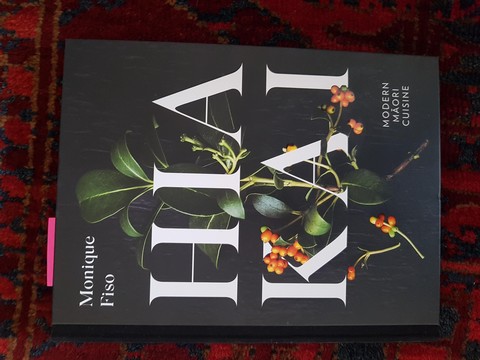11 September 2020
HIAKAI - THE BOOK!

Recently there’s been much discussion in erudite food circles about the New Zealand food story as writers, critics and chefs attempt to identify what our cuisine looks like to the world, and what could be claimed as distinctive about the way we choose what to cook and how we prepare it. We have become the masters of fusion cuisine as waves of immigrants from all over the world change what we eat (Auckland alone has more than 80 restaurants offering menus of differing ethnicities.) We’ve adapted, embraced and incorporated plenty of new ideas into a diet that for many years was essentially based on early colonial fare.
There was, however, a missing factor that can truly be claimed as unique to Aotearoa; the tradition, ingredients and methods of Māori food. It has been exciting, and not before time, to observe the awakening of chefs and cooks to the possibility of incorporating native foods into their menus. But it has taken a visionary young woman chef, Monique Fiso, passionate about her heritage (Ngā Rauru, Ngāti Ruanui) to immerse herself in research, to reimagine and present traditional Māori food which she does in her stunning Wellington restaurant, Hiakai (hungry or having a desire for food.)
Her book, Hiakai, may be the singularly most important food book ever published in New Zealand with a deep dive into everything that plays into modern Māori food. Fiso’s painstaking investigation into traditions and ingredients gathered information from numerous sources in libraries and collections, here and abroad. Māori traditionally told their stories and history orally, handing it down through generations. This is the first time this valuable information has been recorded and crammed into one volume. For the mind-boggling ambitious task, which encompasses Māori history, mythology, tikanga (customs) and indigenous ingredients, Fiso was assisted by an associate professor of food culture, Tracy Berno and local food writer Lucy Corry.
The book has three major sections. The all-important section of stories, mythology and history is followed by a comprehensive explanation of all past and present indigenous ingredients, from the earth, land and ocean. Finally there’s a taste of the restaurant fare that diners have to book months ahead to try at Hiakai.
The recipes are brilliant and joyful, delving into previously unknown territory to encompass indigenous ingredients that can be sourced today, yet no doubt with much effort. Fiso’s extensive acumen for foraging and fermentation is evident but with few recipes that other cooks would even attempt. There’s no doubt she is leading the way for New Zealand chefs to embrace Māori cuisine and ingredients, and hopefully many (or all) will see this book as a highly desirable reference for their own kitchens.
The photographs by Amber Jayne Bain and Manja Wachsmuth too are stunning. Fiso’s personality and focus are well captured as she ventures into bush and shoreline on foraging trips, works with her staff, and cooks for the sophisticated and receptive audience at Hiakai.
Hiakai is serious, ground-breaking and a genuine taonga.
This review was first published in ketebooks.co.nz